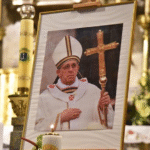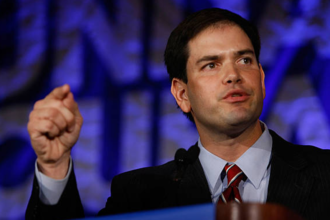Renowned for his intense love for the Virgin Mary, Pope Francis has decided to be buried in Santa Maria Maggiore in Rome. This choice is very important for the Catholic community as well as for the memory of his pontificate. Along with his spiritual relationship to the Virgin Mary, Pope Francis’s funeral at this famous basilica—one of the oldest and most venerated in Rome—showcases his dedication to humility and prayer. This essay will investigate why the Pope picked Santa Maria Maggiore for his last resting placee as well as what this choice implies for the Church and its adherents all around.
- For His Burial, Why Did Pope Francis Choose Santa Maria Maggiore?
- Santa Maria Maggiore's Historical and Spiritual Meaning for the Burial of Pope Francis
- How Pope Francis's Burial Will Affect Santa Maria Maggiore's Legacy
- The last voyage: What will happen at Santa Maria Maggiore during Pope Francis's burial?
- In conclusion: Santa Maria Maggiore's enduring relevance for Pope Francis's burial and beyond
For His Burial, Why Did Pope Francis Choose Santa Maria Maggiore?
Deep in both spiritual and historical significance, Santa Maria Maggiore is a basilica. The first chapel devoted to the Virgin Mary, its mosaics and relics chronicle the early years of the chapel. This church meant especially something to Pope Francis. He visited Santa Maria Maggiore often throughout the years before setting off on foreign travels. Through prayer in this hallowed venue, he always sought the protection of the Virgin Mary.
Pope Francis’s funeral at Santa Maria Maggiore was decided upon not in a hurry. Given how often he visited Santa Maria Maggiore to pray, Father Rolandas Makrickas, the senior priest there, gently asked the Pope whether he had thought about being buried at the church in May 2022. “Popes are buried in St. Peter’s,” the Pope first said, implying that his last resting place will follow custom.
Just one week later, though, Pope Francis summoned Father Makrickas back with an unexpected message. “The Virgin Mary has advised me to get ready for my tomb,” the Pope stated. “Find somewhere for it; you have been a bit of a prophet; I want to be buried in this basilica.” The Pope’s choice to be buried close to the Virgin Mary symbol he so loved attested to his ongoing faith and devotion to the site.
Santa Maria Maggiore's Historical and Spiritual Meaning for the Burial of Pope Francis
One of the four main basilicas in Rome, Santa Maria Maggiore, is of great importance to the Catholic religion without exaggeration. Among the historical items housed in the churchise allegedly a piece of Jesus’ cradle. It also boasts amazing mosaics, some from the 5th century, and a sense of calm allegiance. Pope Francis chose it because of its relationship to the Virgin Mary, who is regarded as a fundamental Catholic figure.
The location of the basilica enhanced its spiritual attractiveness for the Pope as well. Nestled in the center of the city, Santa Maria Maggiore provides a quiet haven from the congested streets just a short walk from the Colosseum and Termini Station. Pope Francis would find the basilica to be a perfect place for introspection and prayer since its proximity to the activity of Rome contrasts with the peace and respect inside the basilica.
Before setting out on his travels, Pope Francis frequently paid visits to the basilica to pray for protection of the Virgin Mary. He connected to this holy location quite personally. Pope Francis not only respected his commitment to Mary but also sent a message about the value of modest, quiet faith—something he supported all during his pontificate—by deciding to be buried here.
How Pope Francis's Burial Will Affect Santa Maria Maggiore's Legacy
With Pope Francis buried at Santa Maria Maggiore, the basilica will become even more important within the Catholic community. His choice to make Santa Maria Maggiore his last resting place guarantees that Catholics all around will still be able to visit and meditate at this site. The church will always be connected with the legacy of the Pope and perhaps draw even more people who want to respect his memory and discover the great relationship he had with the Virgin Mary.
For individuals looking for serenity and spiritual rejuvenation, Santa Maria Maggiore will also continue to be significant. Catholics have traditionally gone there to pray, meditate, and get direction; this will not change. The funeral of the Pope will only increase its importance since it will attract individuals from all over the world who want to interact with his life and ideas.
Furthermore, Pope Francis’s burial in Santa Maria Maggiore will serve as a living tribute to his commitment to the Catholic faith, humility, and compassion—values he so promoted. Future generations will be able to visit this site to honor his pontificate and consider the principles he instilled into the Church. Why Did Filipinos Call Pope Francis ‘Lolo Kiko’? This question reflects the deep affection and respect Filipinos have for him, further highlighting the connection he fostered with the faithful around the world.
The last voyage: What will happen at Santa Maria Maggiore during Pope Francis's burial?
The departure of Pope Francis will signal the end of an era, and his burial at Santa Maria Maggiore will be a very poignant event. Pope Francis will go from the Vatican to the basilica in his last state after death, followed by prayers and reflections of the faithful. To get ready for the event, the church will be momentarily closed to the public for several hours so that guests may spend some time in private.
A stream of people will keep paying their respects once the basilica opens once more. While some will consider Pope Francis’s legacy and influence on the Church, others may come to appreciate the ancient mosaics. For everyone who visits, the Pope’s funeral will be a time of introspection and will surely increase Santa Maria Maggiore’s spiritual relevance.
The basilica will remain a site of worship in the next years, but it will also represent the path and dedication of the Pope to the faith. His burial there will guarantee that Santa Maria Maggiore stays a lighthouse of hope and spiritual link for Catholics worldwide.
In conclusion: Santa Maria Maggiore's enduring relevance for Pope Francis's burial and beyond
Pope Francis’s choice to be buried in Santa Maria Maggiore reveals his strong spiritual link to the church and his relentless allegiance to the Virgin Mary. Pope Francis paid respect to his faith by selecting this modest but important site, therefore leaving behind a legacy that would encourage Catholics for next generations.
Once Pope Francis’s burial takes place at Santa Maria Maggiore, it will surely attract tourists looking for spiritual rejuvenation as well as a closer knowledge of the extraordinary life of the Pope. His last resting place will act as a constant reminder of his respect to the Virgin Mary and his will to lead a modest life and help others.








